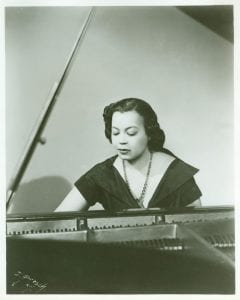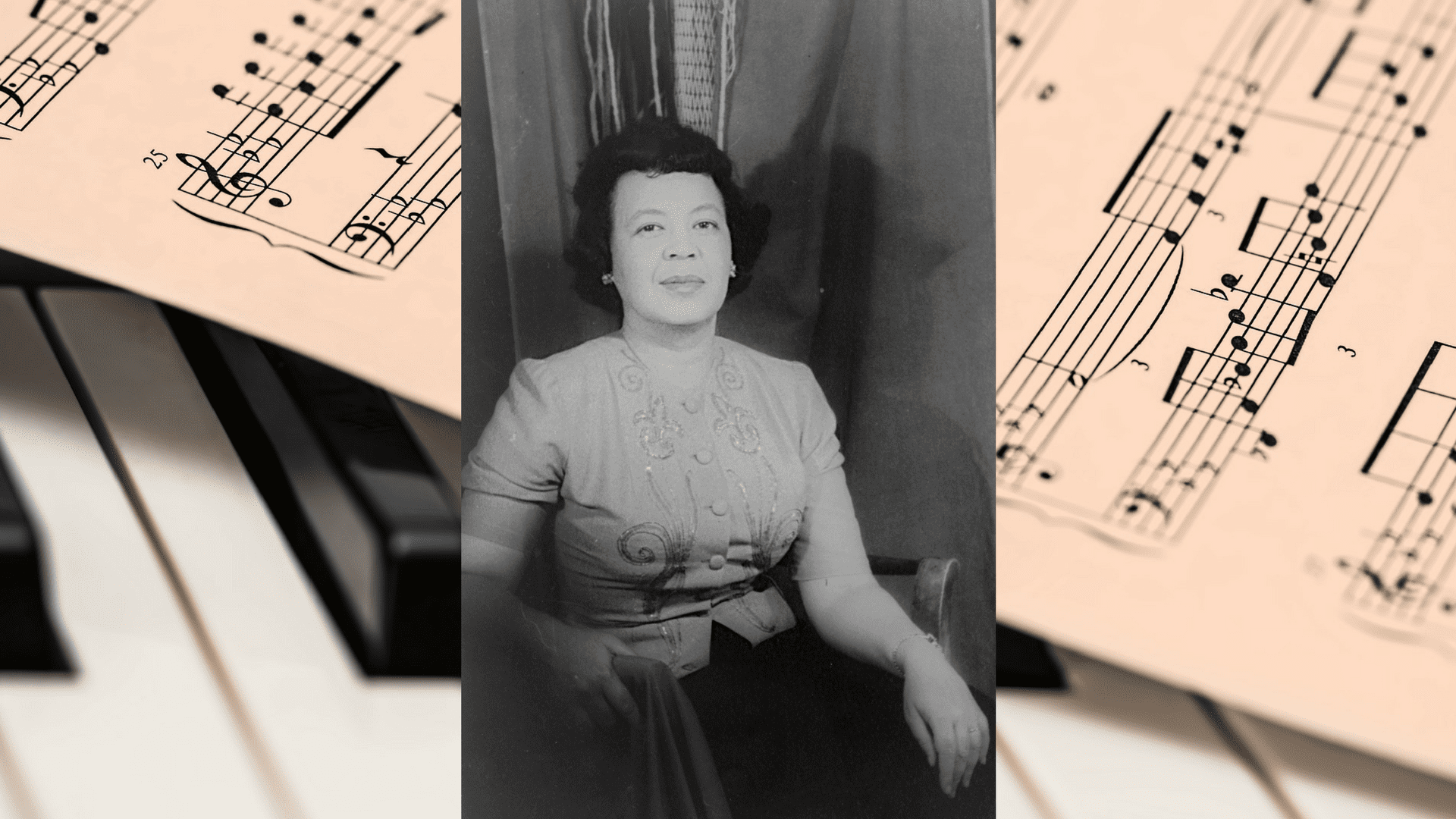Margaret Allison Bonds is an often-unsung master of classical music. Her first-rate works blend styles of African and European origin, and her compositions for voice and piano have profoundly moved audiences. Bonds is best known for her collaborations with the great African American poet Langston Hughes. Read below about Bonds’ life, career, and musical contributions to the American classical music world.
Margaret Bonds: A Unique Voice Crafted in the 20th Century

Margaret Bonds at the Piano, 1952
Margaret Bonds (1913-1972) was an African American composer and pianist most famous for her compositions for piano and voice. Bonds grew up in Chicago and studied music from an early age; among her composition and piano teachers was the great Florence Beatrice Price. Bonds entered Northwestern University at age 16, where she earned her Bachelor’s and Master’s degrees in music. By age 20 Bonds was the first African American to play as a soloist with the Chicago Symphony Orchestra. She lived and worked in Chicago for most of her early career, but moved to New York when she was 26. During her time there she became heavily involved in the civil rights movement and Harlem Renaissance, advocating at every opportunity for her fellow African American artists. She continued to develop her own performance and compositional styles reaching the pinnacle of her career in the 1950s.
One of Bond’s best-known works, The Ballad of the Brown King, is the result of a collaboration with Langston Hughes. The piece is a Christmas cantata for soprano, tenor, and baritone soloists with choir and orchestra and has music by Bonds and text by Hughes. This piece tells the story of King Balthazar, one of the three kings from the Nativity story. The work was met with so much success that it aired on a CBS Christmas special in New York in 1960. The Ballad of the Brown King is speculated by scholars to be Bonds’ most often -performed work and includes a combination of styles of African origin such as jazz, calypso, and African spirituals. Despite the piece’s tremendous breadth and powerful message, there remain hardly any recordings of it today.
Another work born out of the collaboration between Bonds and Hughes is The Negro Speaks of Rivers. In this expressive piece for voice and piano, Bonds sets Hughes’ poem by the same name to music. The music in this work also includes elements of African musical styles blended seamlessly to tell the story of the text. Bonds and Hughes were friends and worked together on several collaborations: he described her as having “written and [performed] some of the most moving arrangements of Negro spirituals I have ever heard.” Some of her compositions for voice and piano are available today as manuscripts, and several have been recorded, but at this time there is no comprehensive collection of Bonds’ music.
The quality of her works and her dedication to highlighting the art of people of African descent make Margaret Bonds a driving force in the classical music community of the 20th century. Bonds says of her own work as a composer, “I realized, very young, that I was the link … between Negro composers of the past. And now, when I sit in the Philharmonic Hall or any of those places, I hear the young Negroes today, … [and] I think, if anything, if I deserve any credit at all, it’s that I have stuck to my own ethnic material and worked to develop it.” Today, there are a handful of performers who program this often-unsung master. Despite having an excellent career and making important contributions to the classical music community of the 20th century, today her music remains largely uncirculated. Margaret Bonds’ works are exquisitely crafted, and if there is ever an opportunity to hear her music performed, members of the community should take it.







Phenomenal. There must be a concerted effort by those with opportunity to ge this music compiled, published, and performed.